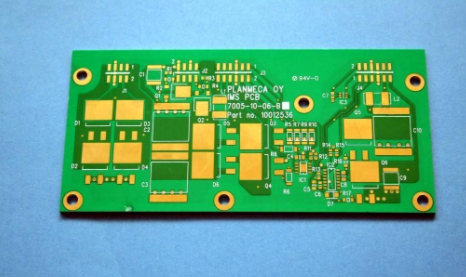In addition to the correct grounding design and installation, the grounding of various signals must be handled correctly. In the control system, there are roughly the following types of ground wires:

(1) DC ground: the ground of the DC power supply.
(2) AC ground: the ground wire of the AC power supply, which is usually a noise-generating ground.
(3) Analog ground: It is the zero potential of various analog signals.
(4) Digital ground: also called logical ground, which is the zero potential of various switch (digital) signals.
(5) Signal ground: usually the ground of the sensor.
(6) Shielding ground: also called chassis ground, designed to prevent electrostatic induction and magnetic field induction.
The above ground wire treatment is an important issue in system design, installation, and debugging. Here are some views on the grounding issue:
(1) The AC ground and signal ground cannot be shared. Because there will be several mV or even several V voltage between two points of a section of power ground wire, this is a very important interference for low-level signal circuits, so it must be isolated and prevented.
(2) Analog ground. The connection of the analog ground is very important. In order to improve the ability to resist common mode interference, shielding floating technology can be used for analog signals. The grounding treatment of specific analog signals must be designed in strict accordance with the requirements of the operation manual.
(3) One point grounding should be adopted for the control system. Generally, the high-frequency circuit should be grounded at multiple points nearby, and the low-frequency circuit should be grounded at one point. In low-frequency circuits, the inductance between wiring and components is not a big problem. However, the interference of the loop formed by the grounding has a great impact. Therefore, one point is often used as the grounding point; however, the one-point grounding is not suitable for high frequency, because high frequency When the ground wire has inductance, the ground wire impedance is increased, and at the same time, inductive coupling occurs between the ground wires. Generally speaking, if the frequency is below 1MHz, one-point grounding can be used; when it is higher than 10MHz, multiple-point grounding can be used; between 1~10MHz, one-point grounding or multiple grounding can be used.
(4) Comparison of floating and grounding. The whole machine floats, that is, all parts of the system float to the ground. This method is simple, but the insulation resistance between the entire system and the ground cannot be less than 50MΩ. This method has a certain degree of anti-interference ability, but once the insulation drops, it will cause interference. Another method is to ground the chassis and float the rest. This method has strong anti-interference ability and is safe and reliable, but it is more complicated to implement.
(5) Shield ground. In the control system, in order to reduce the capacitive coupling noise in the signal, and accurately detect and control it, it is very necessary to shield the signal. According to the shielding purpose, the shielding ground connection method is different. Electric field shielding solves the problem of distributed capacitance and is generally connected to the earth; electromagnetic field shielding mainly avoids high-frequency electromagnetic field radiation interference such as radars and radio stations. It is made of low-resistance metal material with high conductivity and can be connected to the earth. Magnetic field shielding is used to prevent magnetic induction such as magnets, motors, transformers, coils, etc. The shielding method is to close the magnetic circuit with high-permeability materials, and it is generally better to connect to the earth. When the signal circuit is grounded at one point, the shielding layer of the low-frequency cable should also be grounded at one point. If there is more than one location on the shielding layer of the cable, noise current will be generated, which will form a source of noise interference. When a circuit has an ungrounded signal source connected to the grounded amplifier in the system, the shield of the input end should be connected to the common end of the amplifier; on the contrary, when the grounded signal source is connected to the ungrounded amplifier in the system, the input of the amplifier The terminal should also be connected to the common terminal of the signal source.
For the grounding of the electrical system, it should be classified according to the requirements and purpose of grounding. Different types of grounding cannot be simply and arbitrarily connected together. Instead, it must be divided into several independent grounding subsystems, each of which has its common grounding point. Or grounding trunks, which are connected together at the end to implement total grounding.
The above is an introduction to the types of PCB design grounding. Ipcb is also provided to PCB manufacturers and PCB manufacturing technology.